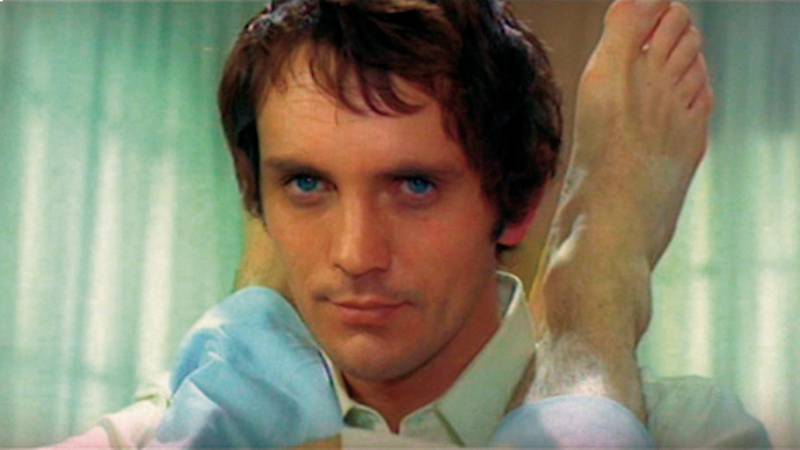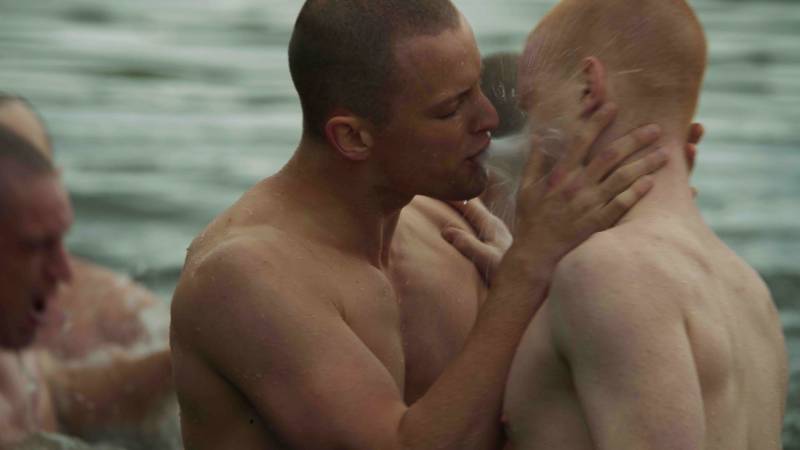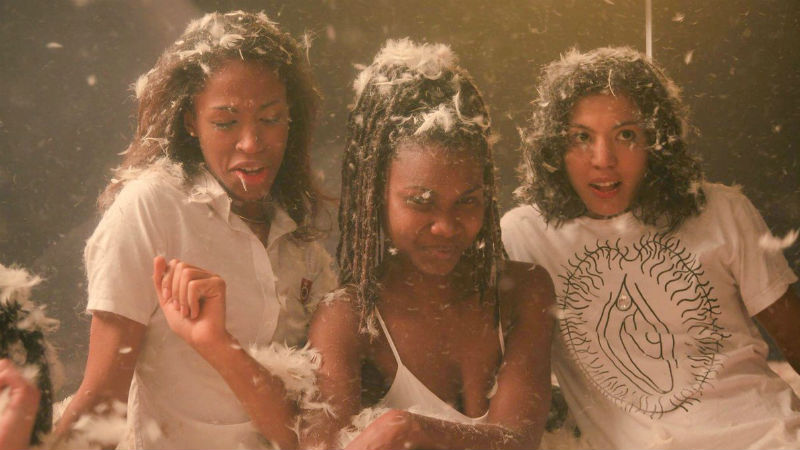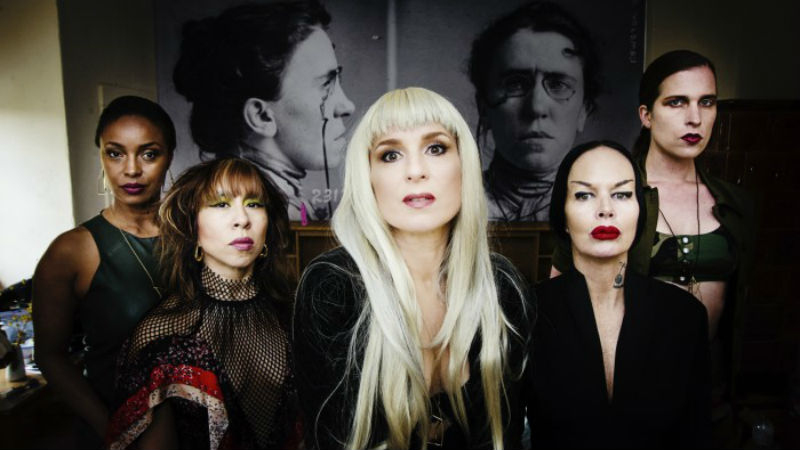Bruce La Bruce is no stranger to visiting controversy. In; in No Skin Off My Ass (1991), he subverted Nazi ideologies and principles; LA Zombie (2008), he created a gay zombie thriller, and in Ulrike’s Brain (2017), LaBruce inserted the brain of a far-left revolutionary in a contemporary setting. But whatever LaBruce’s flirtations with other genres, he has always maintained true to the trappings of his career, which is why it shouldn’t come as a surprise that The Visitor – the director’s most overtly political work to date – ripples with sexual energy from the opening shot to the last.
The film opens on a homeless man standing beside the Thames, who is surprised to find a virile man (Bishop Black) resembling a Black Adonis tucked up inside the bag. Determined to bring chaos to the bourgeoisie (in this case, a domicile containing an affluent white family), the Adonis treats them to their sexual desires, and in doing so, draws a parallel to the ordinary people situated across England. Bolstered by an inspired marketing slogan (“Fuck for the many, not the few”), the film carries on in such an abstract manner until every member of the family is brought down by their decadence.
Inspired by Pier Paolo Pasolini’s Theorem (1968), LaBruce attempts to bring the struggle between the classes headfirst into the 21st century. No, it’s not as magnetic or as lush as the Pasolini original, but is not to say there’s not a huge amount to admire here, not least in the manner in which LaBruce uses race in order to illustrate the film’s emotional undertones. It is no coincidence that the central Adonis – the harbringer of lust – is played by a black man, typically a central fetish in the world of pornography. But this Adonis has more to offer the family than his cock: It’s a chance to bring the upper classes down from the inside out, using love,not hate, as his central tool.
Soundtracked by Hannah Holland’s intense techno beats, the individual coitus scenes are driven by animal lust, pushing the boundaries of sexual norms. And that’s how the scene between the Adonis and the Mother (Amy Kingsmill) plays out , beckoning viewers to “Join the new sexual world order” through a series of moans and dry humps. Naturally, the visitor in question takes a more dominant position, pushing the boundaries of his sexual instrument forward into the system (a tidy metaphor for a vagina. The camera slowly introduces viewers to the narrative, by opening in a natural environment, before closing in on more intimate quarters. By the time the film closes, there isn’t a sense that the audience has visited the ornate house, but lived in it.
As a political drama, the mood is induced early on by the Union Jack flag that flits over the Thames, reminding audiences of the region where the drama is unfolding. We hear the dulcet tones of a man crying out that there are too many refugees coming into the area, in an effort to destroy family unity. The film makes a jab at the Empire Britain has spent close to a thousand years building from the ground up. LaBruce has a liberal view on immigration, pitying those from poorer countries who must travel by uncomfortable means (a bag in this instance) in the hope of gaining meaningful employment. This very left wing in its resolve.
DOP Jack Hamilton shoots mostly static, although he makes sure to pay close attention to the erotic devices used by the participants in their journey to sexual fulfilment. Some of it feels recognisably propulsive, lit up by a latent desire to capture the devil inside each and every respectable person. Like much of his filmography, LaBruce lets the taboo wash over the proceedings, but there’s a frisson to the fornication, because there’s a rationale behind the debauchery,. This is one of LaBruce’s most polemical and most inventive movies. Nobody is going to leave the cinema thinking that the comments about immigrants are unfair. Fuck for the many, not the few.
The Visitor just premiered in the Panorama section of the 74th Berlin International Film Festival.
Disclaimer: this film was produced and co-written by Victor Fraga, publisher and editor of DMovies (alongside Alex Babboni).













